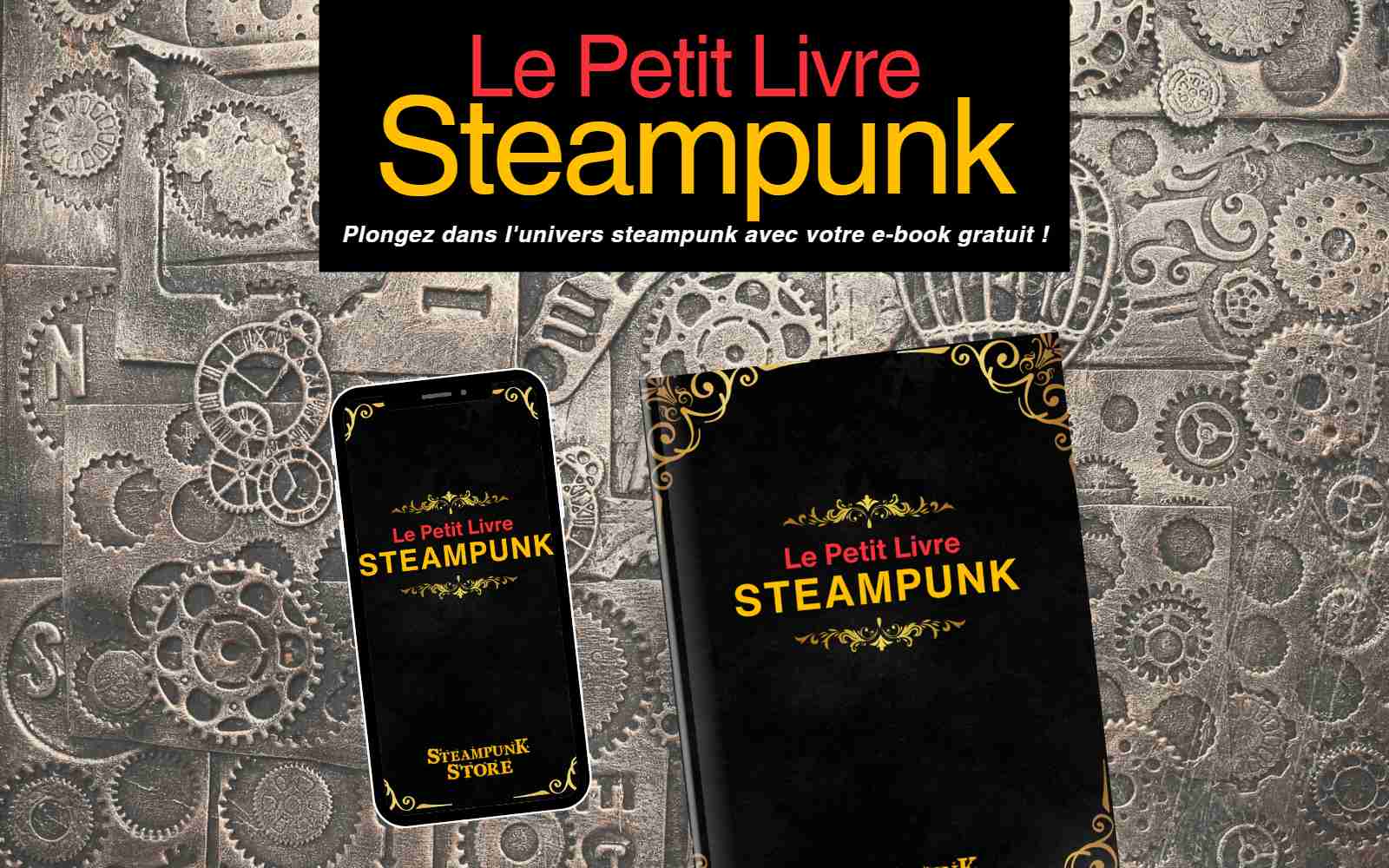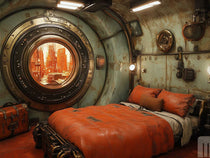The Indelible Impact of Dracula on Gothic Literature

Published in 1897, "Dracula" forged the modern vampire myth, creating a mechanism of narrative that continues to influence popular culture across the globe. This Gothic novel transcended its era to become a pillar of the fantastic genre, equal to the indispensable Frankenstein, inspiring countless cinematic and literary adaptations that continue to reinvent the vampire archetype for contemporary audiences.
Stoker's work fundamentally redefined the vampire in the collective imagination. Before "Dracula," vampires were often depicted as bestial and repulsive creatures of folklore. Stoker transformed this image by creating a sophisticated, seductive, and terrifying character simultaneously. This duality opened the path to more complex interpretations of the vampire in modern literature, establishing a template that writers continue to explore and subvert today.
Historical Context: The Steam-Powered Anxieties of the Victorian Era

Imagine a world where steam reigns supreme... It was within this atmosphere of profound social and technological transformations of the Victorian era that Bram Stoker, this ingenious Irish writer, conceived his magnum opus. Influenced by Romanian folklore and the legends of the Carpathians, Stoker created a universe where superstition intertwines with modernity, forming a complex dialogue between ancient fears and emerging technologies.
The Victorian epoch was marked by profound tensions between tradition and progress. On one side, galloping industrialization transformed the urban and social landscape of Britain and America. On the other, a deep attachment to traditional moral values persisted. "Dracula" perfectly embodies this duality: the Count represents an ancestral threat from the "savage" East, while the protagonists utilize modern technologies (such as the phonograph or blood transfusion) to combat him, creating a fascinating dialectic between old-world mysticism and new-world rationalism.
The Plot: A Complex Clockwork Mechanism

The story of "Dracula" operates as a complex clockwork mechanism, where each gear serves its purpose in the grand design. We follow legal clerk Jonathan Harker on his journey to Transylvania, where he encounters Count Dracula in his sinister castle. Meanwhile, in England, strange events surround Mina Murray and Lucy Westenra, like the initial rumblings of an infernal machine beginning to operate.
The epistolary structure of the novel adds layers of complexity to the plot architecture. The journals, letters, and newspaper clippings that compose the narrative create a remarkable effect of verisimilitude, while allowing Stoker to manipulate perspectives and dispense information strategically, thereby intensifying the narrative tension and creating what literary scholars call a "documentary gothic" approach that would influence horror fiction for generations.
The Characters: Complex Automatons in a Macabre Ballet
Jonathan Harker: The Chronograph of Victorian Rationality

Jonathan Harker transcends the role of a simple legal clerk. He embodies the modern Victorian man, rational and pragmatic in his worldview. His journey to Transylvania functions as an expedition into a realm of alternative technologies, where the laws of nature appear to have been rewritten according to darker principles. Harker's transformation throughout the novel, from naive young professional to hardened vampire hunter, reflects the shocking collision between modernity and the ancestral forces that Dracula represents.
Mina Murray: The Moral Compass and Bridge Between Two Worlds

Mina Murray represents far more than a typical fiancée in distress. She embodies the "New Woman" of the Victorian era: educated, capable, and progressive in her thinking. Her stenographic skills and mastery of emerging technologies (such as the typewriter) make her a crucial asset in the battle against Dracula. Her psychic connection with the vampire adds a fascinating dimension to her character, positioning her at the crossroads between the ancient and modern worlds, serving as both victim and instrumental force in the vampire's eventual defeat.
Count Dracula: The Mechanical Antagonist of Multiple Facets

Count Dracula functions as a complex automaton that embodies numerous anxieties of Victorian society. He simultaneously represents:
- Fear of the Foreigner: Emanating from Transylvania, Dracula incarnates the threat of the "Other," reflecting anxieties related to immigration and racial purity that permeated Victorian England and, by extension, American society.
- Repressed Sexuality: The scenes of biting and vampiric seduction are charged with sexual undertones, challenging the strict moral norms of Victorian propriety.
- Decadent Aristocracy: As an ancient noble, Dracula represents a parasitic ruling class, literally feeding upon the common people.
- Fear of Reverse Evolution: Dracula, with his power to transform others into vampires, represents the terror of humanity's "de-evolution" or regression to a more primitive state.
Abraham Van Helsing: The Master Clockmaker of the Supernatural
Professor Abraham Van Helsing transcends the simple role of vampire hunter. He serves as the crucial bridge between modern science and ancient knowledge systems. Van Helsing employs both advanced scientific methods and traditional folkloric remedies (such as garlic and the crucifix) to combat Dracula. His character illustrates the persistent tension between rationality and superstition that characterized the Victorian intellectual landscape, embodying what we might call an "enlightened occultism."
Themes and Symbolism: The Gears of the Narrative

- Good versus Evil: An eternal combat between two gigantic machines, representing modern civilization's struggle against primitive and chaotic forces that threaten social order.
- Sexuality and Desire: The steam that powers the intrigue, exploring the boundaries of Victorian morality. The scenes of vampiric biting and seduction are laden with sexual tension, reflecting the repressed desires of Victorian society and challenging contemporary notions of feminine purity.
- Life and Death: A profound meditation on immortality and the limits of scientific understanding. Dracula, as the undead, defies natural laws and represents a perverted form of eternal existence.
- Modernity versus Tradition: The novel explores the tension between technological advancement (represented by the protagonists) and ancestral forces (embodied by Dracula), creating a complex dialogue about progress and preservation.
- Reverse Colonialism: Dracula can be interpreted as a metaphor for the fear of "invasion" from the colonies into the metropolis, reflecting the imperial anxieties of the Victorian era and concerns about the empire striking back.
The Settings: Stages Charged with Symbolism

Transylvania: An Ancestral Realm
Transylvania transcends mere exotic backdrop. It represents a world of mechanical marvels and alternative technologies, the domain of Count Dracula. Stoker's descriptions of the Carpathians and Dracula's castle create an atmosphere of danger and mystery, where natural laws appear suspended. The contrast between this ancient world and modern England serves as a fundamental element of the novel's geographic symbolism.
London: The Clock of the Modern World
London, the capital of the British Empire and a model for American urban development, is depicted as the beating heart of modern civilization. Here, good and evil confront each other in a mechanical ballet of deadly precision. Dracula's presence in London symbolizes the contamination of modernity by ancient and "barbaric" forces, threatening the very foundations of Western progress.
Dracula's Legacy: A Perpetual Mechanism

The influence of "Dracula" on popular culture operates like a perpetual mechanism, continuing to function long after its creator ceased to exist. Its impact reverberates across multiple domains of American and global culture:
Literature
"Dracula" inspired an entire subgenre of vampiric literature. Works such as "Interview with the Vampire" by Anne Rice or the "Twilight" saga by Stephenie Meyer draw directly from Stoker's legacy, reinventing the vampire myth for new generations while exploring contemporary themes of alienation, desire, and otherness.
Cinema
Dracula's influence on cinema is immeasurable, establishing visual and narrative conventions that persist today:
- Nosferatu (1922) by F.W. Murnau: This unauthorized adaptation established the visual aesthetic of the vampire in cinema, creating an iconography that remains influential.
- Dracula (1931) by Tod Browning: Featuring Bela Lugosi in the title role, this film defined Dracula's popular image for decades, establishing the suave, aristocratic vampire archetype.
- Horror of Dracula (1958): With Christopher Lee, this Hammer Film production brought new sensuality and violence to the myth, revolutionizing horror cinema.
- "Bram Stoker's Dracula" by Francis Ford Coppola (1992): This sumptuous adaptation sought to remain faithful to the novel while exploring its psychosexual subtexts with unprecedented visual sophistication.

Television
Series such as "Buffy the Vampire Slayer" and "The Vampire Diaries" have popularized the vampire myth among younger audiences, while continuing to explore themes of sexuality, power, and immortality introduced by Stoker, often subverting traditional gender roles and power dynamics.
Video Games
The vampire figure, and often Dracula himself, has become a recurring element in video games. The "Castlevania" series, for example, is entirely constructed around the struggle against Dracula and his minions, creating interactive gothic narratives that engage players in the vampire-hunting tradition.
Fashion and Subculture
Vampiric aesthetics, with their capes, dark attire, and attraction to the macabre, have profoundly influenced Gothic fashion and alternative subcultures. Events such as "vampire balls" testify to the enduring fascination with this aesthetic universe, particularly in American Gothic and steampunk communities.
The Eternal Tick-Tock of Dracula

Dear readers, I hope this journey through the gears and mechanisms of "Dracula" has inspired you as much as it has fascinated me. From the complexity of its characters to the richness of its themes, through to its enduring impact on popular culture, "Dracula" remains a work of profound literary and cultural significance that continues to reward careful analysis.
In examining Stoker's masterpiece, we discover not merely a horror story, but a sophisticated exploration of modernity's anxieties, a meditation on the nature of desire and power, and a prescient vision of globalization's dark possibilities. The novel's epistolary structure, its careful balance of ancient folklore and modern technology, and its complex characterizations establish it as one of the most important works of Gothic literature ever created.
And remember, in the marvelous world of steampunk, even the most terrifying creatures of shadow can possess a heart that beats to the rhythm of clockwork precision! The mechanical sublime and Gothic terror share more than we might initially suspect, both exploring the boundaries between human and machine, life and death, progress and regression.

Sources for Further Exploration
- Stoker, Bram. Dracula. 1897.
- Arata, Stephen D. "The Occidental Tourist: Dracula and the Anxiety of Reverse Colonization." Victorian Studies, 1990.
- Senf, Carol A. "Dracula: Stoker's Response to the New Woman." Victorian Studies, 1982.
- Craft, Christopher. "'Kiss Me with Those Red Lips': Gender and Inversion in Bram Stoker's Dracula." Representations, 1984.
- Hughes, William. Bram Stoker's Dracula: A Reader's Guide. Continuum, 2009.
- Skal, David J. Hollywood Gothic: The Tangled Web of Dracula from Novel to Stage to Screen. Faber & Faber, 2004.
- Eighteen-Bisang, Robert and Elizabeth Miller. Bram Stoker's Notes for Dracula: A Facsimile Edition. McFarland, 2008.
- Moretti, Franco. "The Dialectic of Fear." New Left Review, 1982.
- Punter, David. The Literature of Terror: A History of Gothic Fictions. Longman, 1996.
Eugénie Vaporette
Curator-Consultant in Steampunk and Gothic Aesthetics
Graduate in Victorian Technology History







